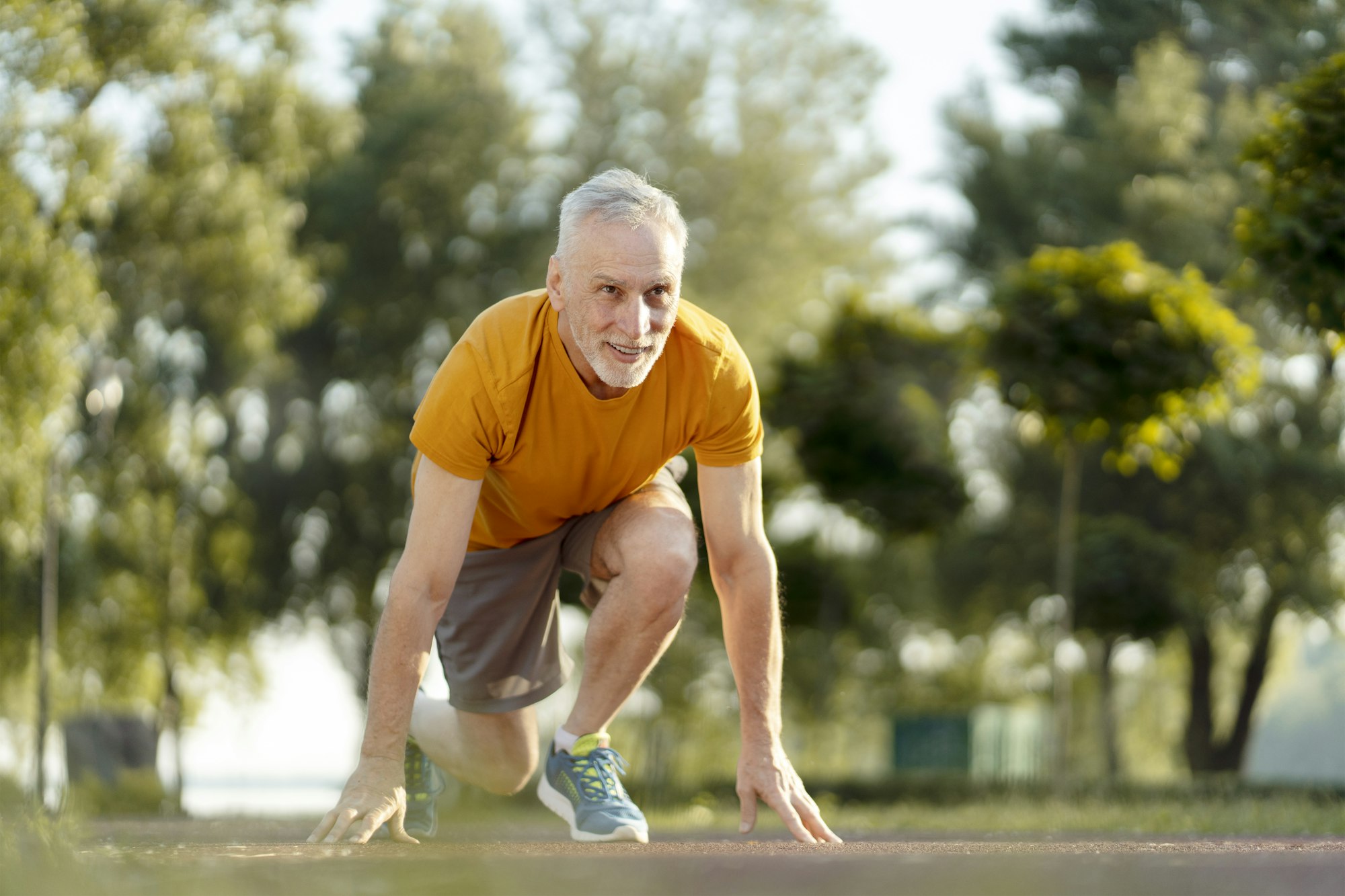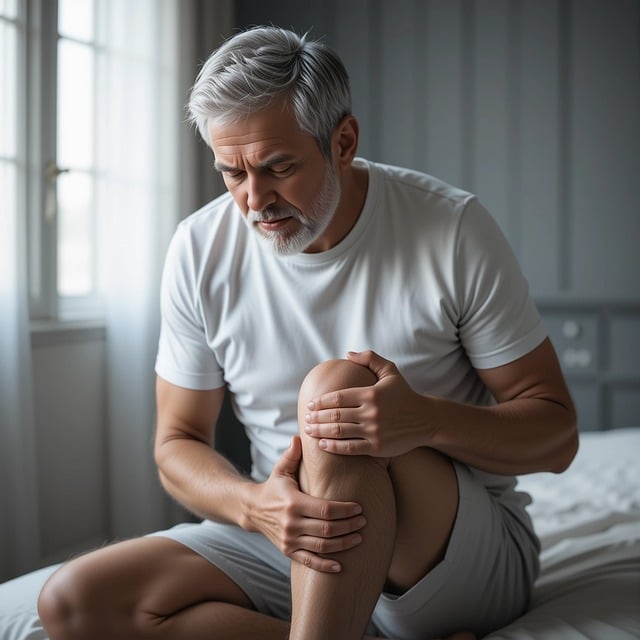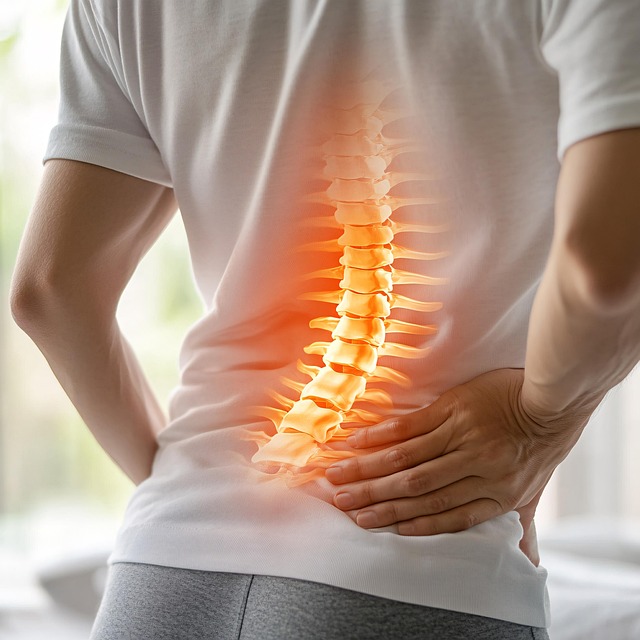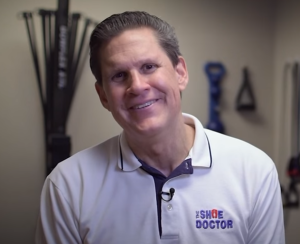The best non-invasive solution for lower limb pain often depends on the cause, but common approaches include physical therapy, targeted exercises, and the use of supportive devices such as compression stockings. A lot of individuals find success with cold or hot packs to reduce swelling and relax muscles. Stretching and low-impact exercises such as walking or swimming can assist in maintaining the flexibility of joints and muscles. For some, topical or OTC meds may suffice for light pain. Lifestyle factors like staying active and maintaining a healthy weight can help. In the meat of the post, we’ll discuss what you can actually do and look at proven alternatives for lower limb pain.
Key Takeaways
- If you’re experiencing lower limb pain, it’s important to first identify the cause so you can determine the most appropriate treatment.
- In general, non-invasive solutions — such as movement therapy, compression, orthotics and temperature contrast — provide dramatic pain relief when customized to the individual, frequently achieving superior results when combined.
- Mind-body methods, including mindfulness and relaxation practices, can considerably modify pain experience and promote well-being in both acute and chronic pain situations.
- Complementary therapies, such as acupuncture, manual therapy and aquatic exercise, offer alternative avenues that can be combined with conventional treatments for comprehensive pain relief.
- Healthy lifestyle habits, like eating right, maintaining a healthy weight, and getting great sleep, are all critical for supporting your long-term pain relief and overall health.
- By consistently tracking progress, refining management plans, and keeping up with advancements in non-invasive pain solutions, you’ll be equipped to find sustainable relief and enhance your quality of life.

Foundational Non-Invasive Solutions
Foundational non-invasive solutions for lower limb pain prioritize pain reduction and functional rehabilitation without surgical intervention. These foundational interventions prevent musculoskeletal surgeries by reducing symptoms and improving quality of life. They’re tuning forks for different ailments – low-back, knees, feet. The subsequent sections explore foundational strategies and their real world advantages.
Treatment Option | Effectiveness (%) | Typical Duration | Approximate Cost (USD) |
Movement Therapy | 60–80 | 6–12 weeks | 50–200 per session |
Compression | 50–70 | Ongoing/as needed | 20–150 per garment |
Orthotics | 55–75 | Long-term use | 100–500 per pair |
Temperature Contrast | 40–65 | 10–30 mins daily | 10–50 one-time |
Mind-Body Techniques | 30–60 | Daily/ongoing | Free–100+, varies |
It is usually better to combine therapies. Getting the right balance is dependent on comfort, level of pain and your needs. Remaining informed about innovative treatments in pain care sustains wellness.
Movement Therapy
We know that exercise and movement therapy reduces pain and increases function in individuals with musculoskeletal pain. Consistent, low-impact exercise—like walking, cycling or swimming—keeps your joints healthy and your muscles strong. Stretching and strengthening exercises reinforce lower limb alignment, and yoga or tai chi enhance balance and flexibility. For optimal benefits, consult a physical therapist who can recommend exercises tailored to your history, type of pain and daily requirements.
Compression
Compression stockings or wraps are commonly used to promote blood flow and reduce swelling in the legs. Lots of folks with chronic pain or swelling from vascular problems get great relief with basic compression socks. For more severe instances, intermittent pneumatic compression devices can be implemented. We don’t want you to have to live with unnecessary pain — so pay attention to what feels more comfortable when using compression, as some types are more helpful than others.
Orthotics
Custom orthotics provide personalized support to your feet, which can relieve pain in your lower extremities. Prescription inserts act on a targeted issue—like plantar fasciitis or flat feet—and tend to modify your gait, resulting in reduced discomfort as time passes. Supportive insoles can be purchased over the counter, but a visit to a podiatrist guarantees the optimal fit for your individual foot shape. Orthotics are one of the foundational non-invasive solutions, keeping countless people off the operating table.
Temperature Contrast
Heat therapy relaxes tense muscles and stimulates blood flow, cold therapy reduces inflammation and numbs acute pain. Hot and cold, like a hot towel and then a cold pack, can be more powerful than either one alone. Be sure to observe safety tips to steer clear of burns or frostbite and monitor skin condition throughout use.
Mind-Body Connection
Mind-body approaches, such as mindfulness and breathing exercises, assist in pain management by reducing stress and redirecting attention from the pain. Meditation and guided imagery cultivate mental fortitude, helping make chronic pain more manageable. Emotional health is important in healing too, so these approaches are often combined with somatic treatments for optimal results.
Complementary Pain Relief
Complementary pain relief is now a bigger part of lower limb pain relief, with more choices than ever. These therapies typically complement standard care, addressing a broader set of needs and preferences. A personalized strategy, flexible in methodologies, typically works best for individuals.
Acupuncture
Acupuncture inserts very thin needles at particular points in order to harmonise the flow of energy, or qi, and potentially relieve pain. The WHO acknowledges acupuncture for certain pain disorders, but the results are conflicting, particularly with regards to chronic back pain. In lower limb pain, some patients experience improved motion and reduced pain following several treatments. Locate a licensed acupuncturist who has experience working with lower limb conditions to minimize risk and maximize results.
Agenda your pain and function at each visit. This gives you and your practitioner a sense of whether or not acupuncture is worth pursuing. Everyone is different, so monitoring it closely is important.
Manual Therapy
Manual therapy, such as massage and myofascial release, can relieve muscle strain and increase circulation. These manual techniques address tense or painful areas, providing temporary reprieve for certain individuals. For lower limb pain, consistent treatment from a specialized therapist can assist in controlling symptoms and enhancing daily mobility.
You’ll learn self-massage techniques for home use—handy in between our visits! Still, many manual therapies don’t demonstrate consistent results in research, so treat them as one piece of a larger strategy, not a magic bullet.
Aquatic Exercise
Aquatic exercise utilizes water’s buoyancy to reduce joint stress, thereby facilitating movements and reducing pain. Water activities such as swimming, water aerobics or structured aqua-therapy sessions can develop strength and flexibility without taxing the legs. Most people discover their bodies respond better to the water—they’re able to keep up with aquatic exercise because pain typically breaks down land exercises.
So join a local class or seek guidance from a certified aquatic therapist. Monitor differences in pain and mobility as you proceed. Others experience consistent improvements in both pain management and functionality, particularly when they supplement these exercises with additional pain relief methods.
The Lifestyle Connection
Lifestyle choices have a strong effect on lower limb pain and general health. How you eat, move, rest, and act every day shapes your pain levels and your body’s ability to heal. Simple changes in daily habits—like improving posture or staying active—can shift the odds in your favor. It’s not just about short-term fixes; it’s about building habits that support your body for years to come. A checklist can help you spot which changes might matter most for you: review your eating patterns, check your daily steps, assess hydration, and monitor your sleep quality. Each small effort, when practiced over time, can add up to meaningful relief and better long-term health.
Nutrition
- Leafy greens (spinach, kale): rich in antioxidants, may lower inflammation.
- Fatty fish (salmon, sardines): high in omega-3s, support joint health.
- Berries (blueberries, strawberries): contain polyphenols with anti-inflammatory properties.
- Nuts and seeds (almonds, chia): provide healthy fats and minerals.
- Turmeric and ginger: natural compounds may help curb pain signals.
Make sure you’re drinking plenty of water each day to help keep joints lubricated and encourage healing. Water hydrates your entire system and even mild dehydration can exacerbate pain.
Eliminate processed foods and added sugar. These could aggravate inflammation, delay your healing, and increase your pain.
For personalized tips, a nutritionist can assist you in crafting a meal plan that suits your lifestyle and objectives.
Weight
Maintaining a healthy weight reduces pressure on knees, hips, and lower back. This is one of the best ways to decrease pain — particularly among osteoarthritis patients.
- Track your food intake to spot habits.
- Add regular movement—walking, swimming, or cycling—to your week.
- Go for nutrient-dense foods that satisfy you without extra calories.
- Weigh yourself weekly to watch your progress.
Check your body composition–not just weight–so you don’t miss muscle or fat shifts. Adjust your routine if your body or pain shifts. Even modest weight loss can translate to less stress on your joints and less pain.
Sleep
Good sleep allows your body to repair itself and control pain. Establish a bedtime, rise at the same time, and cultivate a peaceful pre-sleep ritual. A cool, dark and quiet room will allow you to rest deeper.
Utilize pillows and mattresses that do not place strain on your spine and limbs. Change it if you wake stiff. Monitor your sleep to identify trends or problems. Addressing sleep issues such as frequent waking or insomnia can reduce pain and increase your general wellbeing.
Creating Your Personal Plan
Building a personal plan for lower limb pain means designing a strategy that matches your body, lifestyle, and goals. Start by looking at your diet and identifying foods that may trigger inflammation. You can try an elimination diet on your own or get guidance from a dietitian. Many people find relief with anti-inflammatory eating styles like the Mediterranean or DASH diet. These emphasize fruits, nuts, whole grains, fish, and healthy oils, which can ease joint and muscle pain while improving sleep. For people with diabetes who deal with daily pain, proper nutrition is especially important since it supports other pain-reducing habits.
Your plan should also include movement and daily routines. Pay attention to your posture, weight, and how often you move. Small changes, such as standing taller, stretching regularly, or avoiding long periods of sitting, can ease strain on your legs and back. If your pain comes from a recent injury, apply a cold pack during the first 48 hours for 15 to 20 minutes at a time, then remove.
Set clear, realistic goals. Decide whether your priority is reducing inflammation, improving mobility, or easing nighttime discomfort. Track your progress to see what works best. A simple table can help you stay consistent:
Week | Diet Changes | Activity Level | Pain (1–10) | Sleep Quality | Notes |
1 | Begin DASH | Brief walks | 7 | Poor | Used cold packs, minimal relief |
2 | More fish | More steps | 6 | Fair | Better sleep, less swelling |
3 | Less sugar | Stretch daily | 5 | Good | Tried massage |
4 | Extra fiber | Yoga | 4 | Yes | Better movement |
Stay flexible with your plan. If something doesn’t work, adjust it. Explore options like massage, physical therapy, or chiropractic care. Mind-body approaches, including cognitive-behavioral therapy, can also help you manage the stress and thoughts that make pain feel worse.
Finally, work closely with your health care provider. They can guide you with expertise tailored to your medical history. Review your progress together and update your plan as you move forward.

The Future of Pain Management
Pain management is evolving rapidly with the emergence of novel non-invasive therapies and technologies. Keeping ahead is crucial for lower limb pain sufferers. Neuromodulation is a giant leap. It’s utilizing devices that modulate nerve signals to manage pain. Think spinal cord stimulators and nerve stimulators that sit adjacent to nerves in the legs. They’re getting smarter and smaller. Some might even soon operate solo, training on how pain evolves and even beaming updates to a physician from a distance.
AI is also reimagining pain care. AI can sift through data from health records, wearables, and patient reports. It aids in identifying what treatment could be most effective for each individual. That is, you can make plans for each patient — not a cookie cutter cure. Because with AI, the danger in taking strong pain pills like opioids can decrease, and care can be more precise.
Virtual reality is yet another tool that’s getting more play. VR has the ability to distract from pain and reprogram how the brain interprets pain. Certain VR applications employ video games or soothing panoramas to provide stress and pain alleviation. Mindfulness training in VR is being researched. Those who’ve tried these often say they experience less pain after a few sessions.
Researchers are discovering novel drugs, such as Compound 194, that cooperate with the body’s natural pain system. Which might translate to pain relief without addiction. Wearable tech is supporting users in monitoring pain and its triggers. These can notify a phone or health team. Hopefully, folks can get better aid without needing to visit the clinic so frequently.
They’re also psychedelics, like psilocybin, for pain. Some initial research indicates that tiny doses could assist with persistent pain. These are all still in trials, but thus far the results are promising, and worth keeping an eye on.
Participating in clinical trials or online groups can assist individuals in discovering these emerging options. That’s why sharing stories and talking with others can be so helpful in deciding what to try.
Conclusion
Relieving lower limb pain doesn’t always require big changes—small, consistent steps make a real difference. Start with daily habits like short walks or gentle stretches. Use ice or heat to soothe sore areas, and choose supportive shoes or insoles to give your legs more strength. Light massage or hydrotherapy can ease cramps and fatigue, while quality sleep and balanced nutrition help your body heal.
Track what works for you, adjust as needed, and explore modern tools like smart bands or pain apps to monitor progress. The best results often come from blending classic remedies with new technology. Keep learning, share your successes, and connect if you need guidance. Drop your best tips or questions below—together, we can take steps toward lasting relief.
Frequently Asked Questions
1. What are non-invasive solutions for lower limb pain?
Some non-invasive solutions are physical therapy, exercise, rest, ice or heat therapy and using compression or elevation. Non-invasive means no surgery or injections and are safe for the majority of people.
2. Can lifestyle changes help reduce lower limb pain?
Yes, losing weight, staying active and wearing good supportive shoes lessen the load on the lower limbs. Easy habits to manage and avoid pain.
3. Are non-invasive treatments effective for chronic lower limb pain?
For most, non-invasive solutions like PT, stretching, and relief devices work wonders. It can be effective depending on the etiology and severity of the pain.
4. What role does exercise play in managing lower limb pain?
Consistent, mild movement aids in building muscle, enhancing flexibility and reinforcing joints. That can result in less pain and improved mobility long term.
5. When should I seek medical advice for lower limb pain?
Consult a doctor if pain is severe, persistent, or associated with swelling, redness or numbness. Early diagnosis helps you avoid complications and offers better consequences.
6. Are there natural remedies for lower limb pain?
Natural remedies like warm baths, gentle massage or herbal creams can provide relief. As always, check for allergies and consult your doctor prior to use.
7. How can I create a personal plan for pain management?
Partner with a doctor to determine the origin of your pain. Pair suggested non-invasive treatments with lifestyle modifications and consistent observation for optimal outcomes.
Struggling With Back or Knee Pain? Find Real Relief With Custom Orthotics From The Shoe Doctor
If everyday movements leave you dealing with nagging back pain or aching knees, your feet may be part of the problem. Misalignment in your foundation can place extra stress on joints and muscles higher up in your body. At The Shoe Doctor, our custom orthotics are designed to correct that imbalance, reduce pressure, and restore comfort so you can move freely again.
With over 20 years of experience, Russell uses advanced 3D foot-mapping technology to create orthotics tailored to your exact foot shape and movement. These orthotics do more than add cushioning—they improve alignment, support your stride, and help prevent pain from coming back. Through our partnership with the Spine & Injury Medical Center in San Jose, we also make sure your whole-body mechanics are addressed for lasting relief.
If you’re in the South Bay Area, schedule your free consultation today. Let The Shoe Doctor help you move pain-free and reclaim your day, starting from the ground up.
Disclaimer
The materials available on this website are for informational and entertainment purposes only and are not intended to provide medical advice. You should contact your doctor for advice concerning any particular issue or problem. You should not act or refrain from acting based on any content included in this site without seeking medical or other professional advice. The information presented on this website may not reflect the most current medical developments. No action should be taken in reliance on the information contained on this website, and we disclaim all liability for actions taken or not taken based on any or all of the contents of this site to the fullest extent permitted by law.


